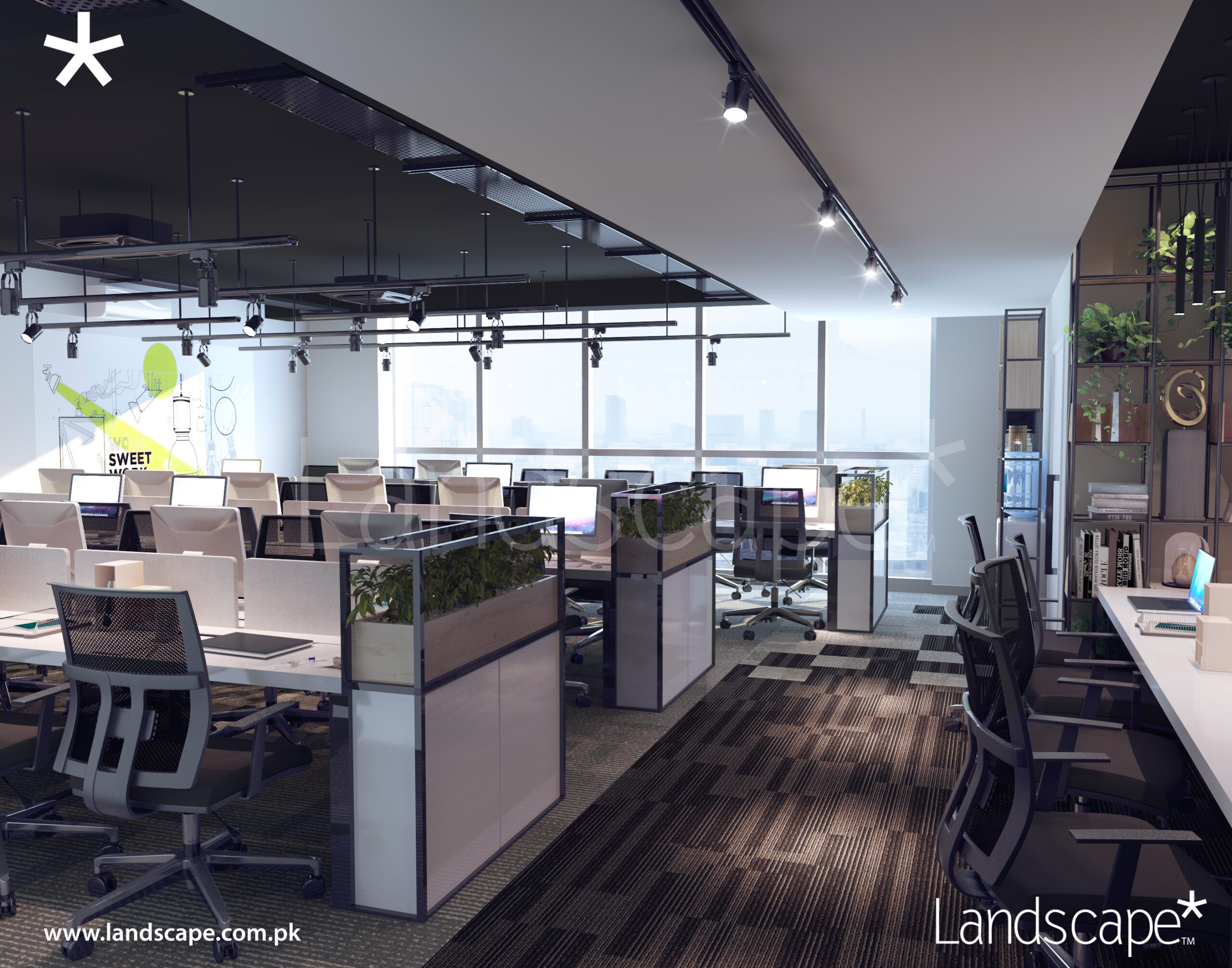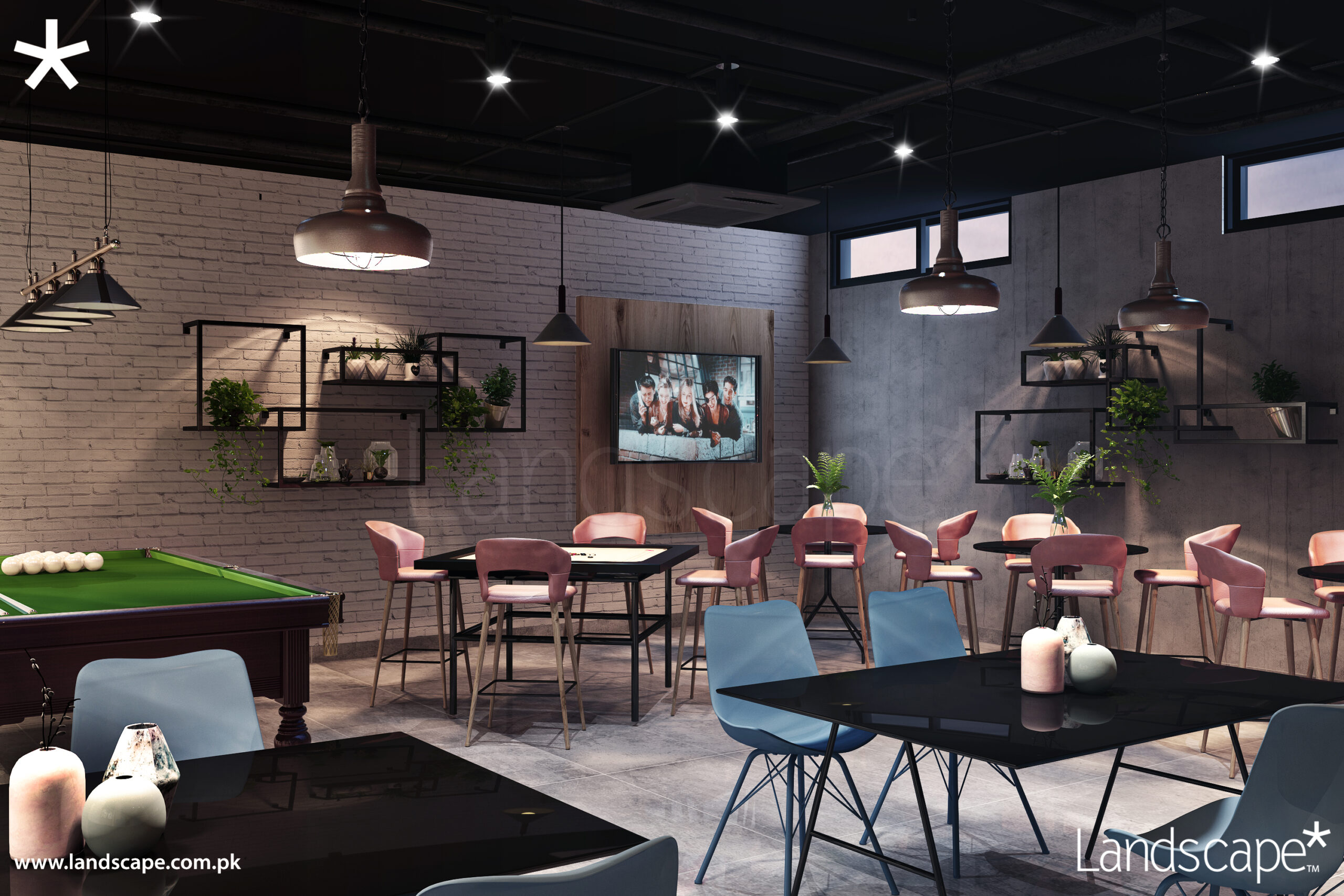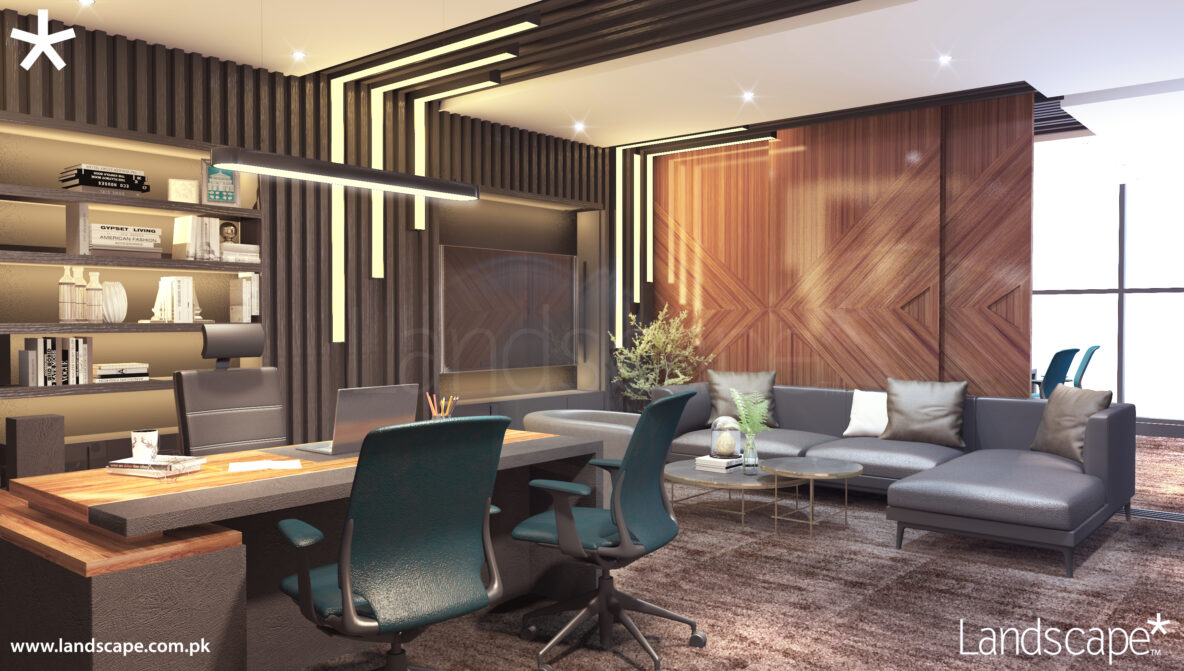Office interior design plays a crucial role in shaping the work environment, influencing both employee productivity and overall company culture. As businesses continue to evolve, the design of office spaces has shifted from traditional cubicles to more dynamic, flexible layouts that promote collaboration, creativity, and well-being. Whether you’re designing a new office or revamping an existing space, understanding the principles of effective office interior design can help you create a workspace that inspires and supports your team.
The design of an office isn’t just about aesthetics; it’s about creating a space that aligns with the company’s values and meets the needs of its employees. A well-designed office can boost morale, improve efficiency, and even attract top talent. Conversely, a poorly designed space can lead to discomfort, decreased productivity, and higher employee turnover.

1. Productivity: The layout and design of an office can have a direct impact on productivity. Open floor plans encourage collaboration but may require designated quiet zones to minimize distractions. Ergonomic furniture reduces strain and fatigue, leading to more comfortable and focused employees. The key is to balance open, collaborative spaces with areas for privacy and concentration.
2. Company Culture: Office design reflects and reinforces company culture. A vibrant, creative environment with bold colors and innovative layouts can communicate a company’s forward-thinking and dynamic culture. On the other hand, a more traditional design with private offices and subdued colors might be better suited for a company that values structure and formality.
3. Employee Well-Being: Modern office design prioritizes employee well-being. This includes not only physical comfort through ergonomic furniture but also mental well-being through access to natural light, greenery, and areas for relaxation. Incorporating wellness-focused design elements can reduce stress, improve mood, and enhance overall job satisfaction.

To create an office that is both functional and aesthetically pleasing, focus on these key elements:
1. Layout and Space Planning: Efficient space planning is the foundation of good office design. Start by assessing the needs of your employees and the nature of their work. For example, a creative agency may benefit from open collaborative spaces, while a law firm might require private offices for confidentiality. Ensure there’s a logical flow to the space, with clear pathways and easy access to essential areas like meeting rooms, restrooms, and break areas.
2. Lighting: Lighting is a critical aspect of office design that can significantly impact productivity and well-being. Maximize natural light wherever possible, as it helps reduce eye strain and boosts mood. Supplement with adjustable task lighting for individual workstations and ambient lighting for communal areas. Avoid harsh fluorescent lights, which can cause fatigue and discomfort.
3. Furniture: The choice of office furniture should prioritize both comfort and functionality. Ergonomic chairs and adjustable desks support employee health, while modular furniture offers flexibility to reconfigure spaces as needed. Consider investing in quality furniture that not only enhances the look of the office but also stands up to daily use.
4. Colors and Materials: The color scheme of an office can influence mood and energy levels. Neutral tones with pops of color can create a balanced environment, while brighter hues like yellow or orange can stimulate creativity and energy. Materials like wood and metal add texture and can convey professionalism and durability.
5. Technology Integration: Modern offices require seamless technology integration. This includes ensuring there are enough power outlets, Wi-Fi access points, and charging stations throughout the office. Consider incorporating smart technology, like automated lighting and climate control, to enhance convenience and energy efficiency.

To create an office space that supports productivity and well-being, consider these practical tips:
⦁ Incorporate flexible workspace to accommodate different working styles, from collaborative areas to quiet zones.
⦁ Prioritize acoustics to reduce noise distractions, especially in open-plan offices. Use sound-absorbing materials like carpets, acoustic panels, and partitions.
⦁ Design for growth by choosing modular furniture and flexible layouts that can easily adapt to changes in team size or work processes.
⦁ Add greenery to improve air quality and create a more inviting, calming atmosphere.
Office interior design is more than just arranging desks and chairs; it’s about creating an environment that reflects the company’s values, supports its employees, and enhances productivity. By focusing on key design elements like layout, lighting, furniture, and technology, you can create a workspace that not only looks great but also promotes well-being and efficiency. Whether you’re designing a startup’s first office or reimagining a corporate headquarters, a thoughtful approach to office interior design can transform your workspace into a place where employees thrive.
 1. Productivity: The layout and design of an office can have a direct impact on productivity. Open floor plans encourage collaboration but may require designated quiet zones to minimize distractions. Ergonomic furniture reduces strain and fatigue, leading to more comfortable and focused employees. The key is to balance open, collaborative spaces with areas for privacy and concentration.
2. Company Culture: Office design reflects and reinforces company culture. A vibrant, creative environment with bold colors and innovative layouts can communicate a company’s forward-thinking and dynamic culture. On the other hand, a more traditional design with private offices and subdued colors might be better suited for a company that values structure and formality.
3. Employee Well-Being: Modern office design prioritizes employee well-being. This includes not only physical comfort through ergonomic furniture but also mental well-being through access to natural light, greenery, and areas for relaxation. Incorporating wellness-focused design elements can reduce stress, improve mood, and enhance overall job satisfaction.
1. Productivity: The layout and design of an office can have a direct impact on productivity. Open floor plans encourage collaboration but may require designated quiet zones to minimize distractions. Ergonomic furniture reduces strain and fatigue, leading to more comfortable and focused employees. The key is to balance open, collaborative spaces with areas for privacy and concentration.
2. Company Culture: Office design reflects and reinforces company culture. A vibrant, creative environment with bold colors and innovative layouts can communicate a company’s forward-thinking and dynamic culture. On the other hand, a more traditional design with private offices and subdued colors might be better suited for a company that values structure and formality.
3. Employee Well-Being: Modern office design prioritizes employee well-being. This includes not only physical comfort through ergonomic furniture but also mental well-being through access to natural light, greenery, and areas for relaxation. Incorporating wellness-focused design elements can reduce stress, improve mood, and enhance overall job satisfaction.
 To create an office that is both functional and aesthetically pleasing, focus on these key elements:
1. Layout and Space Planning: Efficient space planning is the foundation of good office design. Start by assessing the needs of your employees and the nature of their work. For example, a creative agency may benefit from open collaborative spaces, while a law firm might require private offices for confidentiality. Ensure there’s a logical flow to the space, with clear pathways and easy access to essential areas like meeting rooms, restrooms, and break areas.
2. Lighting: Lighting is a critical aspect of office design that can significantly impact productivity and well-being. Maximize natural light wherever possible, as it helps reduce eye strain and boosts mood. Supplement with adjustable task lighting for individual workstations and ambient lighting for communal areas. Avoid harsh fluorescent lights, which can cause fatigue and discomfort.
3. Furniture: The choice of office furniture should prioritize both comfort and functionality. Ergonomic chairs and adjustable desks support employee health, while modular furniture offers flexibility to reconfigure spaces as needed. Consider investing in quality furniture that not only enhances the look of the office but also stands up to daily use.
4. Colors and Materials: The color scheme of an office can influence mood and energy levels. Neutral tones with pops of color can create a balanced environment, while brighter hues like yellow or orange can stimulate creativity and energy. Materials like wood and metal add texture and can convey professionalism and durability.
5. Technology Integration: Modern offices require seamless technology integration. This includes ensuring there are enough power outlets, Wi-Fi access points, and charging stations throughout the office. Consider incorporating smart technology, like automated lighting and climate control, to enhance convenience and energy efficiency.
To create an office that is both functional and aesthetically pleasing, focus on these key elements:
1. Layout and Space Planning: Efficient space planning is the foundation of good office design. Start by assessing the needs of your employees and the nature of their work. For example, a creative agency may benefit from open collaborative spaces, while a law firm might require private offices for confidentiality. Ensure there’s a logical flow to the space, with clear pathways and easy access to essential areas like meeting rooms, restrooms, and break areas.
2. Lighting: Lighting is a critical aspect of office design that can significantly impact productivity and well-being. Maximize natural light wherever possible, as it helps reduce eye strain and boosts mood. Supplement with adjustable task lighting for individual workstations and ambient lighting for communal areas. Avoid harsh fluorescent lights, which can cause fatigue and discomfort.
3. Furniture: The choice of office furniture should prioritize both comfort and functionality. Ergonomic chairs and adjustable desks support employee health, while modular furniture offers flexibility to reconfigure spaces as needed. Consider investing in quality furniture that not only enhances the look of the office but also stands up to daily use.
4. Colors and Materials: The color scheme of an office can influence mood and energy levels. Neutral tones with pops of color can create a balanced environment, while brighter hues like yellow or orange can stimulate creativity and energy. Materials like wood and metal add texture and can convey professionalism and durability.
5. Technology Integration: Modern offices require seamless technology integration. This includes ensuring there are enough power outlets, Wi-Fi access points, and charging stations throughout the office. Consider incorporating smart technology, like automated lighting and climate control, to enhance convenience and energy efficiency.
 To create an office space that supports productivity and well-being, consider these practical tips:
⦁ Incorporate flexible workspace to accommodate different working styles, from collaborative areas to quiet zones.
⦁ Prioritize acoustics to reduce noise distractions, especially in open-plan offices. Use sound-absorbing materials like carpets, acoustic panels, and partitions.
⦁ Design for growth by choosing modular furniture and flexible layouts that can easily adapt to changes in team size or work processes.
⦁ Add greenery to improve air quality and create a more inviting, calming atmosphere.
Office interior design is more than just arranging desks and chairs; it’s about creating an environment that reflects the company’s values, supports its employees, and enhances productivity. By focusing on key design elements like layout, lighting, furniture, and technology, you can create a workspace that not only looks great but also promotes well-being and efficiency. Whether you’re designing a startup’s first office or reimagining a corporate headquarters, a thoughtful approach to office interior design can transform your workspace into a place where employees thrive.
To create an office space that supports productivity and well-being, consider these practical tips:
⦁ Incorporate flexible workspace to accommodate different working styles, from collaborative areas to quiet zones.
⦁ Prioritize acoustics to reduce noise distractions, especially in open-plan offices. Use sound-absorbing materials like carpets, acoustic panels, and partitions.
⦁ Design for growth by choosing modular furniture and flexible layouts that can easily adapt to changes in team size or work processes.
⦁ Add greenery to improve air quality and create a more inviting, calming atmosphere.
Office interior design is more than just arranging desks and chairs; it’s about creating an environment that reflects the company’s values, supports its employees, and enhances productivity. By focusing on key design elements like layout, lighting, furniture, and technology, you can create a workspace that not only looks great but also promotes well-being and efficiency. Whether you’re designing a startup’s first office or reimagining a corporate headquarters, a thoughtful approach to office interior design can transform your workspace into a place where employees thrive.

